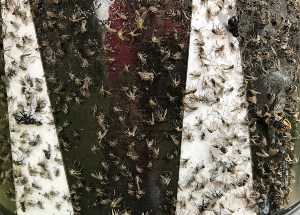The presence of noise or harmful chemicals in commercially available electrical and mechanical mosquito traps often discourages potential buyers. However, in this article, we will explain how to make a mosquito trap at home without these drawbacks.
If you don’t have your usual mosquito repellents or if you prefer not to use them, don’t worry, because you don’t have to spend the night chasing mosquitoes. You can create a mosquito repellent using common household items. Homemade remedies are generally less toxic and may be safer for human health.
Guide on 5 Most Effective DIY Mosquito Traps
If it is necessary to get rid of mosquitoes as soon as possible, you don’t have to purchase expensive means of combating them.
In the fight against these harmful insects, you can get by with a DIY mosquito trap. Keeping mosquitoes away from your home can be a daunting task, but you can use the tools you have at hand.
Principle of mosquito traps
In general, all mosquito traps operate on a similar principle – they lure mosquitoes into a confined space where they become trapped and eventually die from either poison or dehydration. Mosquitoes are attracted to human scent, warmth, and water, which are the key elements of any mosquito trap.
The basic principle of every mosquito trap is to incorporate one or more features that resemble a mosquito’s source of food or reproduction. For example, a light bulb that emits heat and attracts the attention of female mosquitoes.
Light traps are effective for capturing female mosquitoes, which are the ones that bite, as they are drawn to the heat from the light source and guided towards it during both daylight and darkness.
Mosquitoes also search for the human skin bare areas. They use the heat receptors, trying to get as close to the food source as possible. However, the insects are often deceived by sticking to warm objects.
[su_youtube url=”https://youtu.be/ycBv24djPDM”]
1. Amish Flying Insect Trap
You can use a plastic bottle to make a trap. It works because insects flock to the carbon dioxide released by the fermentation of baker’s yeast (but there is also a yeast-free option).
Animals and humans breathe out carbon dioxide, which is why mosquitoes are so attracted to them. But you can create an alternative source of carbon dioxide by tricking dipterans.
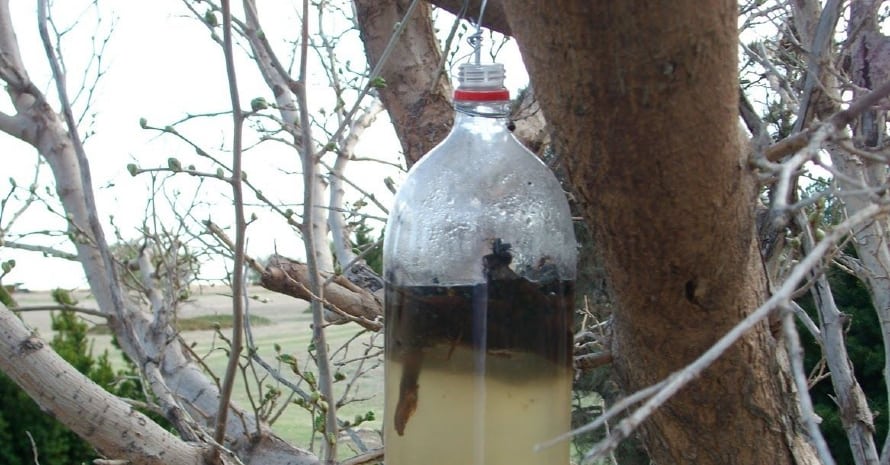
Baker’s yeast is the most popular ingredient in all kinds of mosquito traps due to its effectiveness, availability, and low cost. Also, to manufacture a trap, you will need:
- a plastic bottle of any color
- warm water no higher than 104F (the fermentation stops at higher thermal values);
- sugar baker’s yeast;
- black cloth or paper (aluminum foil is also suitable)
To get rid of other pests, replace the yeast with honey, jam, or small pieces of fruit — something with a more pronounced smell.
One trap works from 4 days to a week. Wait for the moment until the entire sweet element is fermented into alcohol. Then you can leave the bottle, but you have to change the bait. If it is a trap for other insects, and there is jam or honey inside, it can be used continuously for 2 weeks.
If you want to make a yeast-free trap, you can use another ingredient as a main. A variant of the liquid that will be harmful to mosquitoes is vegetable oil. You will need 3-4 plastic bottles and four spoons of vegetable oil (the quality does not matter).
Also Read: DynaTrap Mosquito Trap Review

2. Brown Sugar and Yeast Bottle Trap
This trap is easy to create and it functions by taking advantage of mosquitoes’ attraction to carbon dioxide. The trap requires an empty plastic bottle, yeast, half a glass of brown sugar, and a cup of hot water.
To create the mixture, mix the sugar into the heated water until it dissolves, and then pour the mixture into the bottle. After that, add the yeast to the bottle, and this initiates the reaction that releases carbon dioxide.
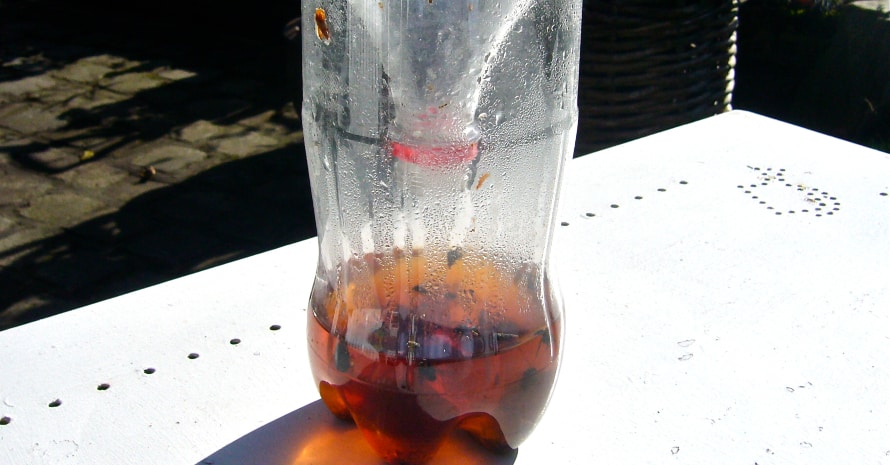
Remove the cap from the neck of the bottle and turn the top of the bottle upside down. Then connect both parts to form a funnel. The trap can be placed or hung. The main thing is to do it away from the place where people are.
Also Read: Best Indoor Mosquito Killers
3. Vinegar and Baking Soda Bottle Trap
The repellents usually mask a human’s odor. It is essential because mosquitoes can smell their food and detect carbon dioxide from over 150 feet away.
However, it’s also helpful to use a CO2 mosquito trap. You don’t have to hide the scent but attract these insects with a mixture of soda and vinegar.
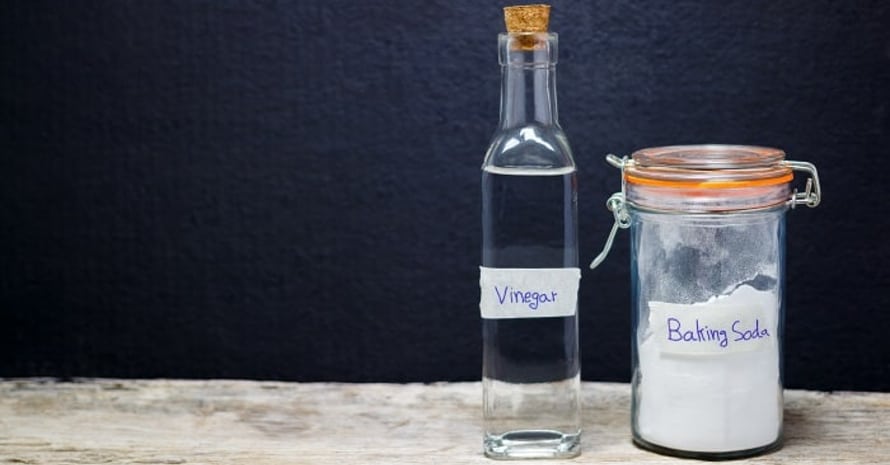
Things and ingredients you need:
- empty 2-liter soda bottle
- scissors
- tape
- 1/4 cup baking soda
- 1 cup vinegar
To create a soda bottle mosquito trap, start by cleaning and drying an empty plastic bottle. Cut the bottle in half, and place 1/4 cup of baking soda in the bottom part. Use the upper part of the bottle to create a funnel, which can be secured with tape.
When baking soda is mixed with vinegar, it releases carbon dioxide, which attracts mosquitoes. The insects enter the funnel and are trapped at the bottom of the bottle, unable to escape.
Also Read: What Are the Best Mosquitoe Zappers
4. Dish Soap & Light Trap
Dish soap mosquito traps are even easier to manufacture than the previous versions. You don’t even need an empty bottle. This recipe assumes that the mosquitoes will be attracted by light and moisture. And as I have already mentioned, they love it.
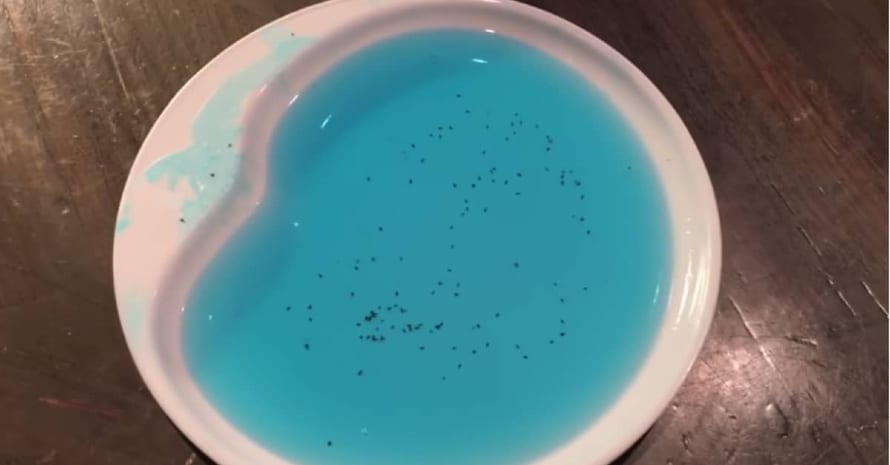
To create an effective insect trap for outdoor or indoor use, a small dish or container is needed. Water should be poured into the dish and mixed with soap to create bubbles.
Mosquitoes will be attracted to the soap bubbles and will be unable to fly away, leading to them drowning in the mixture. Additionally, using a light source, such as a small lamp or candle, can draw mosquitoes to the solution.
A candle can be more effective than a lamp because mosquitoes are attracted to the heat that the light source produces. However, if using a candle, the trap should not be left overnight as it could be dangerous for pets or children who may knock the candle over.
5. Vinegar & Dish Soap Bottle Trap
In order to make an insect trap, you literally need 10 minutes. To craft a trap, you need the following:
- 5 tablespoons of apple cider vinegar
- 2 tablespoons of dish soap
- duct tape;
- plastic bottle
Cut off the top of the bottle. Turn the top over and put it in the bottle, as a result, you should form a kind of funnel. Tie the two parts of the bottle together with duct tape. Pour a mixture of soap and vinegar into the funnel.
All you need to do now is set the trap in an area with a large concentration of insects, for example, under a lantern. The insects will fly into the bottle but will not be able to get out.
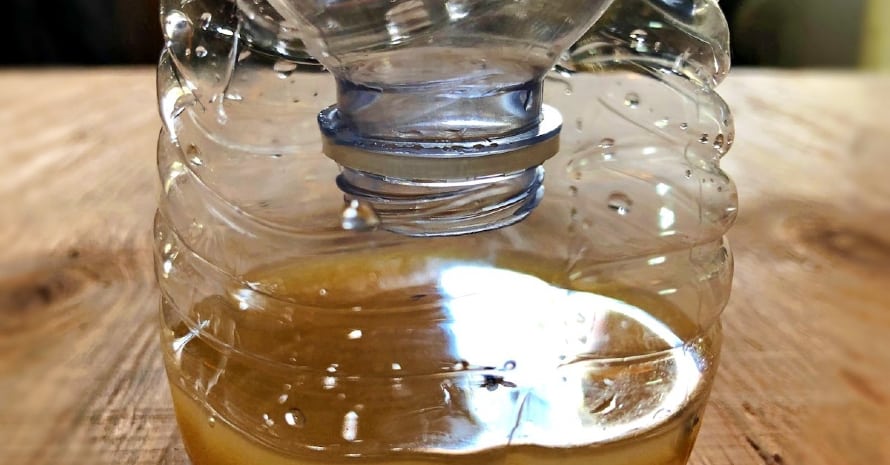
If you don’t have a bottle to make a 2 liter mosquito trap, you can replace it without any problems. Take a glass jar and fill it with a mixture that will attract mosquitoes.
In order to create a funnel, you can use a sheet of paper or a thick napkin. It is enough to roll it up and also put it in a jar. The main thing is that the paper does not get wet, so do not lower it too deep.
FAQ About How to Trap Mosquitoes
In this section, you will get answers to the most popular questions about homemade traps. They will give you even more information on how to get rid of insects and keep them out of your skin.
What attracts mosquitoes to traps?
Carbon dioxide exhaled by humans or released by fermentation attracts mosquitoes. Heat is another factor that is appealing to them.
Mosquitoes fly to heat, for these traps need light sources. Mosquitoes also prefer a humid environment, so there are often many of them near water bodies. Therefore, a water trap has a better chance of attracting insects.
Are mosquito traps effective?
Mosquito traps are an effective insect control method. The most efficient are mosquito traps by releasing carbon dioxide. If you want to achieve maximum results and not feel bites on your skin, you need to change the traps regularly. You can also combine them with using a repellent.
Also Read: Detailed Mosquito Fogger Reviews
What is more effective against mosquitoes, traps or repellents?
These mosquito control methods work differently. Both work, but repellents can contain chemicals that can harm humans or pets as well. Besides, the repellent will not help cope with the number of mosquitoes, so it only masks a human’s smell but does not destroy insects.
Save Your Skin
With the help of home traps, you can forget about itching from mosquito bites. These traps are relatively easy to make with improvised means, and you don’t need to spend a lot of money on them.
All ingredients are natural, so these traps are more sustainable. What methods of how to make mosquitoes trap do you know? Let us know in the comments.
Also read:
- Homemade Mosquito Repellent
- Bugs That Look Like Mosquitoes
- How to Kill a Mosquito in Your Room
- How to Kill Mosquito Larvae
- Are Mosquitoes Attracted to Light
References:
- Mosquito heat seeking is driven by an ancestral cooling receptor (Department of Immunology and Infectious Diseases, Harvard T. H. Chan School of Public Health, Boston, MA 02115, USA American Association for the Advancement of Science):
https://science.sciencemag.org/content/367/6478/681#:~:text=These%20insects%20use%20body%20heat,the%20malaria%20vector%20Anopheles%20gambiae. - Are You a Mosquito Magnet? (By Elizabeth Heubeck WevMD):
https://www.webmd.com/allergies/features/are-you-mosquito-magnet#1 - How to Keep Mosquitoes Away (Joshua Bloom Pest Control Specialist WikiNow):
https://www.wikihow.com/Keep-Mosquitoes-Away

